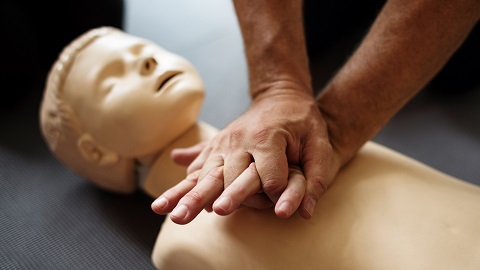Saved by CPR at Home
Of the 300,000 cardiac arrests that occur in the United States, 90% of them occur at home. Only 10% of those patients survive. Joe is a part of that 10% because of CPR.
Of the 300,000 cardiac arrests that occur in the United States, 90% of them occur at home. Only 10% of those patients survive. Joe is a part of that 10% because of CPR.

See the video and original article.
 Be proactive – not reactive. When disaster strikes, do you have a plan?
If a cardiac arrest happened to your loved one or a close friend, would you know how to perform life-saving CPR? Each year sudden cardiac arrest (SCA) strikes a quarter-million Americans. Fewer than 5% survive, due to delays in receiving treatment. An automated external defibrillator (AED) being used within a minute, offers a 90% chance of survival from SCA . Chances of survival are decreased by approximately 7-10% for every minute defibrillation is delayed. Dependence on EMS to deliver defibrillation offers less than a 20% chance of survival due to the time it takes EMS to get there. That is why having Automated External Defibrillators (AEDs) installed in offices, schools, and communities is so important. AEDs are safe, easy to use, low maintenance, and virtually anyone can be trained to operate them.
Be proactive – not reactive. When disaster strikes, do you have a plan?
If a cardiac arrest happened to your loved one or a close friend, would you know how to perform life-saving CPR? Each year sudden cardiac arrest (SCA) strikes a quarter-million Americans. Fewer than 5% survive, due to delays in receiving treatment. An automated external defibrillator (AED) being used within a minute, offers a 90% chance of survival from SCA . Chances of survival are decreased by approximately 7-10% for every minute defibrillation is delayed. Dependence on EMS to deliver defibrillation offers less than a 20% chance of survival due to the time it takes EMS to get there. That is why having Automated External Defibrillators (AEDs) installed in offices, schools, and communities is so important. AEDs are safe, easy to use, low maintenance, and virtually anyone can be trained to operate them.